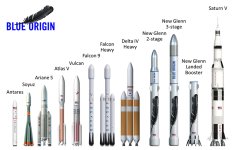Below are updates regarding the anomaly that occurred in preparation for the AMOS-6 mission:
September 23, 1:00pm EDT
Three weeks ago, SpaceX experienced an anomaly at our Launch Complex 40 (LC-40) at Cape Canaveral Air Force Station. This resulted in the loss of one of our Falcon 9 rockets and its payload.
The Accident Investigation Team (AIT), composed of SpaceX, the FAA, NASA, the U.S. Air Force, and industry experts, are currently scouring through approximately 3,000 channels of engineering data along with video, audio and imagery. The timeline of the event is extremely short – from first signs of an anomaly to loss of data is about 93 milliseconds or less than 1/10th of a second. The majority of debris from the incident has been recovered, photographed, labeled and catalogued, and is now in a hangar for inspection and use during the investigation.
At this stage of the investigation, preliminary review of the data and debris suggests that a large breach in the cryogenic helium system of the second stage liquid oxygen tank took place. [Updated 09/24: At this time, the cause of the potential breach remains unknown.] All plausible causes are being tracked in an extensive fault tree and carefully investigated. Through the fault tree and data review process, we have exonerated any connection with last year’s CRS-7 mishap.
The teams have continued inspections of LC-40 and the surrounding facilities. While substantial areas of the pad systems were affected, the Falcon Support Building adjacent to the pad was unaffected, and per standard procedure was unoccupied at the time of the anomaly. The new liquid oxygen farm – e.g. the tanks and plumbing that hold our super-chilled liquid oxygen – was unaffected and remains in good working order. The RP-1 (kerosene) fuel farm was also largely unaffected. The pad’s control systems are also in relatively good condition.
SpaceX’s other facilities, from the Payload Processing Facility at the Cape, to the pad and hangar at LC-39A, are located several miles from LC-40 and were unaffected as well. Work continues at Pad 39A in preparation for bringing it online in November. The teams have been in contact with our Cape Canaveral and Kennedy Space Center partners and neighbors and have found no evidence of debris leaving the immediate area of LC-40.
At SpaceX headquarters in Hawthorne, CA, our manufacturing and production is continuing in a methodical manner, with teams continuing to build engines, tanks, and other systems as they are exonerated from the investigation. We will work to resume our manifest as quickly as responsible once the cause of the anomaly has been identified by the Accident Investigation Team. Pending the results of the investigation, we anticipate returning to flight as early as the November timeframe.
Other efforts, including the Commercial Crew Program with NASA, are continuing to progress. Getting back to flight safely and reliably is our top priority, and the data gathered from the present investigation will result in an even safer and more reliable vehicle for our customers and partners.






